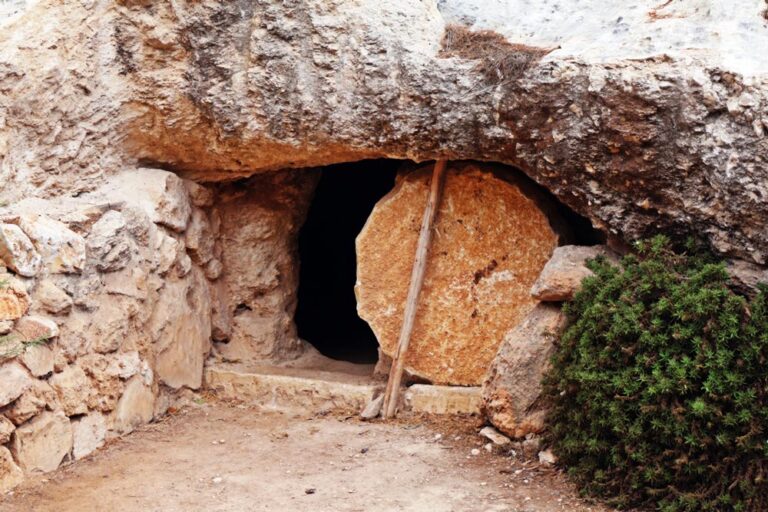Segunda-feira da Semana Santa
Atualmente, a Anunciação é a verdadeira festa da Encarnação, nove meses antes do Natal. Deve ser um dos eventos mais frequentemente imaginados e representados na história humana: um anjo aparecendo para uma jovem provavelmente entre quatorze e dezenove anos. (A Julieta de Shakespeare tinha treze anos). O anjo lhe diz para não ter medo, por ter sido escolhida para ter um filho, cujo nome seria Jesus. Maria deu o seu assentimento e entregou a sua vontade a Deus numa fórmula muito simples: ‘Aqui estou… O que foi dito , que assim seja.’ A concepção aconteceu em sua entrega ao fato de ter sido “ofuscada” pelo Espírito Santo.
Esta história é de uma simplicidade mítica enorme que as mentes racionalistas modernas consideram tão difícil compreendê-la como mágica e como uma visão qualquer da realidade pós-racional. Precisamos nos perguntar se gostaríamos de entendê-la. Mas quando a ouvimos pela primeira vez, precisamos apenas estar abertos ao que ouvimos, para ouvir sem descartá-la como “apenas um conto de fadas”, e ouvi-la repetidamente até que um sentimento de admiração substitua o nosso ceticismo. Talvez para nós o foco não seja imaginar o quanto o anjo era bonito, mas sim o dilema existencial de Maria. E na sua rápida transição do ceticismo racional – “Como é que vai ser isso?” – para a total entrega pessoal de “Eu sou a serva do Senhor; faça-se em mim segundo tua palavra” (Lc 1,26-38).
Prestar atenção a isso é mais respeitoso e eficaz do que tentar desconstruir as palavras ou imaginar “o que realmente aconteceu, se é que alguma coisa aconteceu”. Os textos sagrados em todas as tradições resistem resolutamente a este tipo de tratamento e ao invés disso insistem, que nos rendamos a uma forma de não saber se quisermos compreendê-los. A beleza terna e poderosa das pinturas da Anunciação encontradas em igrejas e galerias de todo o mundo ajuda-nos a confiar na história como um canal da verdade sagrada, sem que ainda a compreendamos.
Não devemos celebrar a Anunciação na Semana Santa, por isso há outro evangelho que descreve Maria de Betânia, a sua irmã Marta e o seu irmão Lázaro, a quem ele ressuscitou dos mortos, entretendo Jesus numa refeição noturna uma semana antes da sua morte.
Maria, o símbolo da contemplação abre um frasco de perfume caríssimo, ‘óleo de nardo’. O nardo era considerado um bom perfume, mas também graças às suas propriedades era sedativo e erva medicinal. Maria unge os pés de Jesus com o unguento; e ele defende o gesto dela quando Judas a ataca por desperdiçar algo tão valioso que poderia ter sido vendido e o dinheiro dado aos pobres.
Ambos os evangelhos desafiam a compreensão exclusivamente racional. Mas ambos também são como uma chave para abrir a mente à inteligência do coração. Isto traz um alargamento da nossa tenda, que é a consciência do espaço fechado e a nossa forma de julgar tudo – até descobrirmos, através da beleza ou do amor, nas palavras ou no silêncio, que cada um de nós tem dentro de si a capacidade de ver além da superfície das coisas e confiar na profundidade desconhecida. ‘Não podemos criar experiência, devemos passar por ela.’
Texto original
Monday of Holy Week
Today, the Annunciation, is the real feast of the incarnation, nine months before Christmas Day. It must be one of the most frequently imagined and represented events in human history: an angel appearing to a young girl probably between fourteen and nineteen. (Shakespeare’s Juliet was thirteen). The angel told her not to be afraid but that she was chosen to bear a child, whose name would be Jesus. Mary gave her assent and opened her will to that of God in a very simple formula: Here I am… What you have said, so be it. The conception happened in her surrender to her being ‘overshadowed’ by the Holy Spirit.
This story is of the greatest mythic simplicity which modern rationalistic minds find as difficult to understand as it does magic and any post-rational vision of reality. We need to ask ourselves if we would like to understand it. But when we hear it for the first time, we need only to be open to it, to listen without dismissing it as ‘just a fairy tale’, and to hear it again and again until a feeling of awe replaces our scepticism. Maybe for us the focal point is not imagining how beautiful the angel was but instead focus on Mary’s existential dilemma. And her swift transition from rational scepticism – ‘how can this be?’ – to the total personal surrender of ‘Here am I; I am the Lord’s servant; as you have spoken so be it.’ (Lk 1:26-38).
Paying attention to this is more respectful and effective than trying to deconstruct the words or imagine ‘what, if anything, actually happened’. Sacred texts in all traditions resolutely resist this sort of treatment and insist instead that we surrender to a way of unknowing if we are to understand. The tender, powerful beauty of the paintings of the Annunciation found in churches and galleries the world over, help us to trust the story as a channel of sacred truth without our yet understanding it.
We aren’t supposed to celebrate the Annunciation in Holy Week so there is another gospel which describes Mary of Bethany, her sister Martha and their brother Lazarus whom he raised from the dead, entertaining Jesus at an evening meal a week before his death. Mary, the symbol of contemplation opens a bottle of very expensive perfume, ‘oil of nard’. Nard was associated with a beautiful scent but also with its properties as a sedative and a medicinal herb. Mary anoints the feet of Jesus with the ointment; and he defends her gesture when Judas attacks her for wasting something valuable that could have been sold and given to the poor.
Both gospels defy exclusively rational understanding. But also both are like a key to opening the mind to the intelligence of the heart. This brings a widening of our tent, which is the enclosed space consciousness and our way of judging everything – until we discover, through beauty or love, in words or silence that we each have within us a capacity to see beyond the surface of things and trust the unknown depth. ‘We cannot create experience, we must undergo it.’






